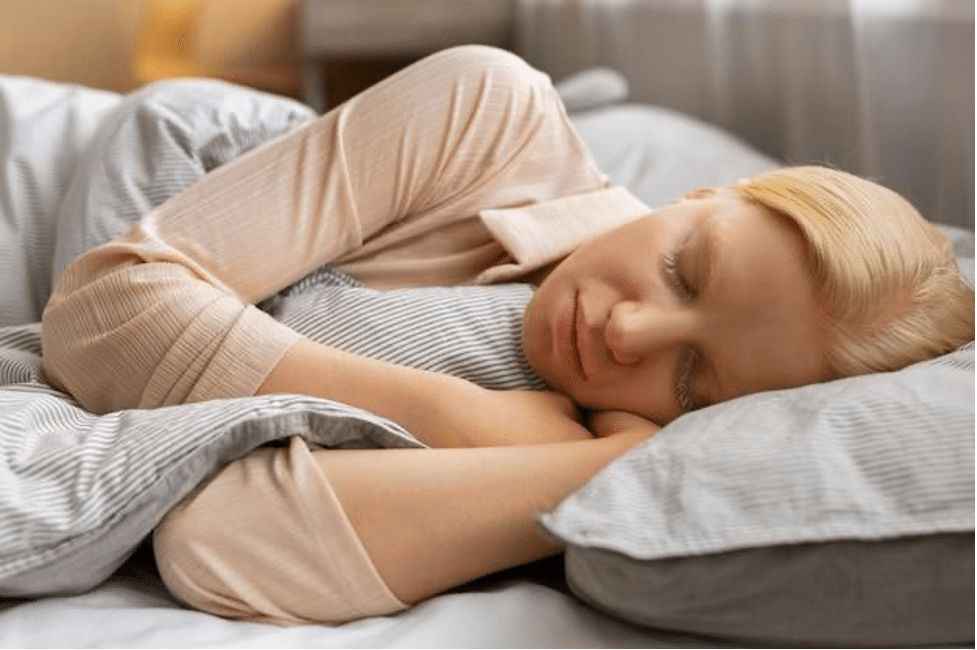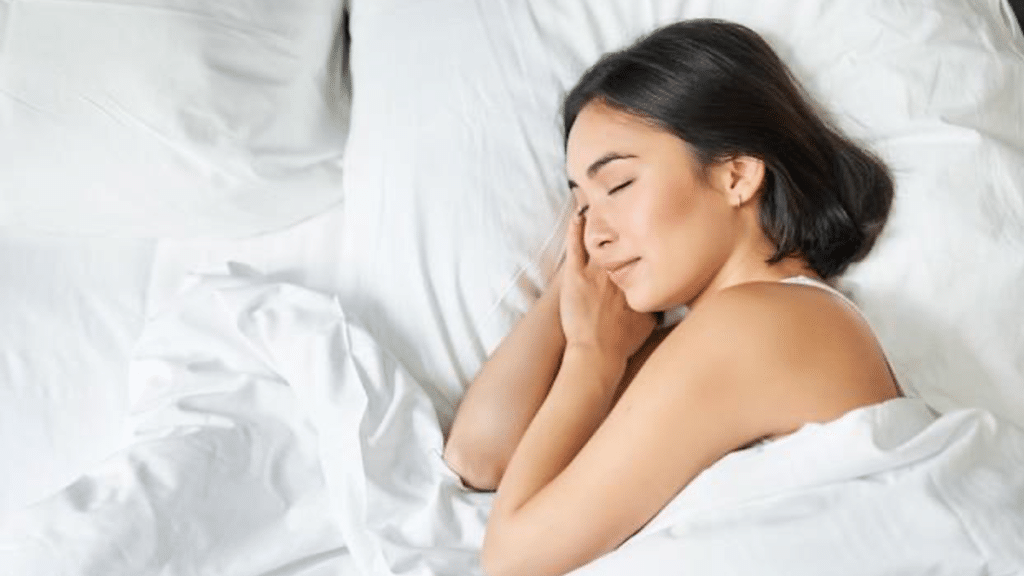Our physical health, emotional balance, and mental clarity are closely related to sleeping quality. High-quality sleep is defined by its depth, continuity, and restorative effects, all of which play their role in helping us get energized and prepared for our daily life activities. Among all the factors that impact the quality of sleep we get; the temperature of our body tops the list. This is why it is critically important to use cool bedding during your sleep in order to maintain the optimal temperature and wake up energized and active to face the challenges that await the next day. Cool beddings regulate our body temperature and help us achieve the ideal sleeping temperature, which falls somewhere between 60° and 68° F (15.6° and 20° C).
Let’s have a look at what are different cycles and how they impact the quality of sleep.
Sleep Cycles and Their Impact on the Body and Brain
Many people ask how to become a deep sleeper. The answer to this question is simple: to complete all the sleep cycles without any disruption. The sleep cycles can be broadly categorized into Non-Rapid Eye Movement (NREM) sleep and Rapid Eye Movement (REM) sleep. Together, they play a vital role in maintaining both physical health and cognitive function.
Here is the breakdown of both the NREM and REM sleep cycles.
✔ Non-Rapid Eye Movement (NREM) Sleep
NREM sleep is the initial and longer phase of each sleep cycle, encompassing three stages that progressively deepen:
1. N1 Stage: The Transitional Phase
During this light sleep phase, the body begins to relax. Muscles may twitch slightly, and the heart rate starts to slow down. This stage serves as a gateway to deeper sleep, where the mind begins to detach from wakefulness. While this stage is brief, it is essential for setting the tone for the rest of the night.
2. N2 Stage: Preparing for Deep Sleep
Brain activity decreases further in this stage, and body temperature drops. The reduction in external responsiveness creates the conditions necessary for deeper rest. This stage accounts for the largest portion of total sleep and acts as the bridge to the most restorative stages.
3. N3 Stage: Deep Sleep
Often referred to as slow-wave sleep, this is the most restorative phase. The body focuses on repair, cell regeneration, and immune system strengthening. Hormones like growth hormones are released and support tissue repair and energy replenishment.
✔ Rapid Eye Movement (REM) Sleep
The REM stage is different from NREM sleep. At this stage, the brain activity accelerates to levels similar to wakefulness, and this is where most dreaming occurs. While the body remains largely immobile, the brain is highly active, consolidating memories and processing emotions.
REM sleep is critical for mental clarity, learning, and emotional health. Disruptions during this phase can lead to cognitive fog and emotional instability during the day.

Understanding the Causes of Insomnia
A large number of people also face insomnia, which dramatically degrades the quality of their lives. Some of the most common causes of insomnia include:
1. Psychological Factors
Some important psychological factors, such as stress, anxiety, and depression, play a critical role in causing insomnia.
Stress releases hormones like cortisol that make it harder to relax and sleep. Anxiety often leads to uncontrolled thoughts and excessive worry, keeping the mind in a state of heightened alertness. Similarly, depression can also disrupt sleep patterns, making it difficult to fall or stay asleep or even causing early-morning awakenings.
2. Physiological Factors
Physical health issues like chronic pain, illness, the side effects of medications, and many other medical conditions like respiratory disorders or gastrointestinal problems also make it difficult to sleep.
3. Environmental Factors
The sleep environment is another critical component. Noise from traffic, neighbors, or even household appliances can prevent the body from relaxing into deeper sleep stages. Excess light, such as that from streetlights or electronic devices, inhibits melatonin production, a hormone essential for regulating sleep. Similarly, unsuitable room temperatures can also create discomfort, leading to interrupted or restless sleep.
4. Lifestyle Habits
Modern lifestyles often conflict with the body’s natural sleep rhythms. Irregular sleep schedules disrupt the circadian clock that governs sleep-wake cycles. The excessive time spent on electronic devices before bedtime exposes the eyes to blue light, which suppresses melatonin production and tricks the brain into staying awake. Having drinks containing caffeine or heavy meals late in the evening also interferes with the body’s ability to wind down for restful sleep.
How Cold Bedding Alleviates Insomnia
Cool bedding is one of the most popular ways to alleviate insomnia. Regulating body temperature and enhancing comfort support smoother transitions through the stages of sleep and directly address common causes of insomnia.
Here is how cool bedding regulates the body temperature in all the stages of sleep.
⮚ N1 Stage: Supporting Relaxation
The initial stage of sleep is a light and transitional phase where the body begins to relax. A cool touch from bedding helps the muscles unwind and calms the nervous system, which promotes faster relaxation. This physical comfort creates an optimal environment for the body to transition seamlessly into deeper stages of sleep without unnecessary delays.
⮚ N2 Stage: Promoting Temperature Regulation
As the body moves into the N2 stage, brain activity slows, and the body’s core temperature naturally drops. Cool bedding assists in sustaining this cooling process, preventing external temperature fluctuations from interfering.
⮚ N3 Stage: Preventing Overheating
The N3 stage is the deepest and most restorative phase of sleep, where the body focuses on repair and regeneration. If your body temperature goes high during this stage, it can disrupt sleep continuity, pulling the body out of the deep sleep required for cellular repair and immune strengthening. Cool bedding counteracts this by providing a stable and comfortable temperature to keep the body in this critical phase for as long as need be.
⮚ REM Stage: Supporting Uninterrupted Dreams
During REM sleep, brain activity increases, and dreaming occurs. While the mind is active, the body still benefits from a cool and comfortable environment. Cool bedding minimizes the risk of overheating, a common cause of sleep disturbances during this phase.
Aerocool™ Cooling Fitted Sheet Set Recommendation
The Aerocool™ Cooling Fitted Sheet Set is an advanced cool bedding solution for hot sleepers and those dealing with night sweats and insomnia. These cool bed sheet sets are made up of Outlast® Phase Change Materials (PCM) and Q-Max>0.4 fabric, which absorbs, stores, and releases body heat to maintain an optimal sleep temperature, thus reducing sweating by up to 48% and ensuring consistent cooling throughout the night. Its ultra-soft fabric, rated at 16 softness points, surpasses traditional fabrics and offers a cloud-like feel that enhances relaxation and comfort. Certified by OEKO-TEX® Standard 100 and FDA-listed, the sheets are safe, skin-friendly, and highly durable.

Other Treatments for Insomnia
Apart from using temperature-regulating beddings, there are many other ways as well to battle insomnia, such as:
1. Pharmacological Treatments
Prescription medications are a common option for temporarily managing severe insomnia. These medications work by adjusting sleep patterns, providing short-term relief for those struggling to fall or stay asleep. However, they must be used under medical supervision to minimize risks. Having said that, most insomnia medicines come with their side effects.
2. Non-Pharmacological Treatments
Behavioral and psychological interventions offer a more sustainable solution for managing insomnia without relying on medication. For this purpose, Cognitive Behavioral Therapy for Insomnia (CBT-I) is a common solution, in which evidence-based therapy addresses unhelpful thoughts and habits that interfere with sleep, which helps individuals build healthier sleep routines. Other techniques like progressive muscle relaxation and guided breathing reduce stress and physical tension, paving the way for natural sleep. Similarly, meditation also promotes mental calmness and eases the restlessness often associated with insomnia.
3. Sleep Aid Devices
Improving the sleeping environment using sleeping aid devices can also alleviate insomnia to a significant extent. For example, white noise machines reduce disruptive sounds with a consistent background noise and create a peaceful environment conducive to sleep. Similarly, sleep masks are also used, which block out light to maintain melatonin production and support the body’s natural circadian rhythm. Additional tools like temperature-regulating mattress toppers and aromatherapy diffusers enhance comfort and relaxation, which further promotes rest.
Ending Insights
In simple words, high-quality sleep involves uninterrupted rest, proper sleep cycles, and waking up feeling refreshed. Laying on breathable, temperature-regulating bedding sheets, you can enjoy a deeper, more restorative rest.
